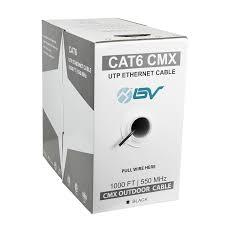In today’s increasingly interconnected world, the demand for reliable network infrastructure has never been greater. Whether in offices, data centers, or manufacturing facilities, ensuring optimal performance in high-density environments is critical. One of the most effective solutions for maintaining data integrity and performance is the use of shielded Category 5e (Cat5e) cables. This comprehensive guide will delve into how these cables function, their advantages, and best practices for implementation in high-density settings.
Understanding Cat5e Cables
Category 5e (Cat5e) cables are twisted-pair cables designed to support Ethernet networks. These cables can transmit data at speeds of up to 1 Gbps (Gigabit per second) over distances of up to 100 meters. The "e" in Cat5e signifies enhanced performance over the original Cat5 standard, particularly in terms of reduced crosstalk and improved signal integrity. Cat5e cables are widely used for various networking applications, including local area networks (LANs), voice over IP (VoIP), and video conferencing.
Construction of Shielded Cat5e Cables
Shielded Cat5e cables are designed with additional shielding to minimize electromagnetic interference (EMI) and radio frequency interference (RFI). This shielding can come in various forms, including:
- Foil Shielding: A thin layer of foil surrounds the individual pairs of wires, protecting them from external interference.
- Braided Shielding: A woven mesh of metal strands encases the cables, providing greater flexibility and durability while shielding against interference.
- Overall Shielding: A combination of foil and braided shielding encases all the pairs, offering comprehensive protection against both internal and external sources of interference.
How Shielded Cat5e Cables Work
The primary function of shielding in Cat5e cables is to prevent interference from disrupting the signal as it travels through the cable. In high-density environments, multiple electronic devices generate EMI, which can induce noise in unshielded cables. This noise can lead to signal degradation, increased bit errors, and reduced network performance.
Shielded Cat5e cables mitigate these issues by:
-
Reducing Crosstalk: Crosstalk occurs when signals from adjacent wires interfere with each other. The shielding in Cat5e cables effectively reduces this phenomenon, allowing for clearer and more reliable data transmission.
-
Diminishing External Noise: The shielding creates a barrier against external sources of interference, such as fluorescent lighting, motors, and other electronic devices, ensuring the integrity of the transmitted data.
-
Improving Data Integrity: With reduced interference, shielded Cat5e cables enhance the reliability of data transmission, crucial for applications requiring high data integrity, such as video conferencing and large file transfers.
Advantages of Using Shielded Cat5e Cables in High-Density Environments
Implementing shielded Cat5e cables in high-density environments offers several advantages:
1. Enhanced Performance
Shielded Cat5e cables deliver superior performance compared to unshielded cables, particularly in environments with high levels of electromagnetic interference. They maintain signal strength and clarity, resulting in faster and more reliable data transmission.
2. Increased Network Reliability
In high-density settings, where numerous devices may operate simultaneously, using shielded cables ensures that the network remains stable. This reliability is critical for businesses that depend on uninterrupted connectivity for their operations.
3. Future-Proofing Infrastructure
As network demands continue to grow, investing in shielded Cat5e cables can future-proof infrastructure. They can handle increased bandwidth and more complex networking requirements, making them a wise long-term investment.
4. Compliance with Standards
Many industries have specific standards regarding network performance and data integrity. Using shielded Cat5e cables helps organizations meet these standards, ensuring compliance with regulations and industry best practices.
Common Interference Sources in High-Density Environments
Understanding the potential sources of interference is crucial for implementing effective shielding solutions. Some common interference sources in high-density environments include:
- Fluorescent Lighting: These lights can emit significant amounts of EMI, affecting unshielded cables nearby.
- Computers and Servers: The operation of multiple devices in close proximity can generate noise, leading to crosstalk and signal degradation.
- Heavy Machinery: In industrial settings, machines can produce substantial electrical noise, which can interfere with network signals.
- Wireless Devices: Wi-Fi routers, Bluetooth devices, and other wireless technologies can introduce RFI, impacting the performance of nearby wired connections.
Best Practices for Implementing Shielded Cat5e Cables
To maximize the benefits of shielded Cat5e cables in high-density environments, consider the following best practices:
1. Proper Installation
Ensure that cables are installed correctly to prevent damage to the shielding. Avoid bending or twisting cables excessively, as this can compromise their shielding effectiveness.
2. Use Appropriate Connectors
Choose connectors specifically designed for shielded cables. These connectors help maintain the integrity of the shielding and ensure that the entire transmission path is protected against interference.
3. Maintain Cable Distance from Interference Sources
Whenever possible, route shielded cables away from known sources of interference, such as power lines and heavy machinery. This distance can further reduce the risk of signal degradation.
4. Implement Grounding Techniques
Proper grounding of shielded cables is essential for minimizing interference. Ensure that the shield is properly connected to ground at both ends of the cable to provide a pathway for dissipating electromagnetic energy.
5. Regular Testing and Maintenance
Conduct regular testing of network performance to identify any potential issues caused by interference. Keeping an eye on network performance can help in promptly addressing any problems that arise.
Conclusion
In high-density environments, where the potential for interference is significant, shielded Cat5e cables provide a robust solution for maintaining reliable network performance. Their design effectively reduces crosstalk and external noise, ensuring that data transmission remains clear and stable. By understanding the construction and advantages of shielded Cat5e cables, as well as best practices for implementation, organizations can significantly enhance their network infrastructure, paving the way for future growth and increased operational efficiency.
Investing in shielded Cat5e cables is not just a choice but a necessity for those aiming to thrive in a data-driven world. With the right strategies in place, businesses can protect their networks against interference, ensuring seamless connectivity and communication in today’s high-density environments.

